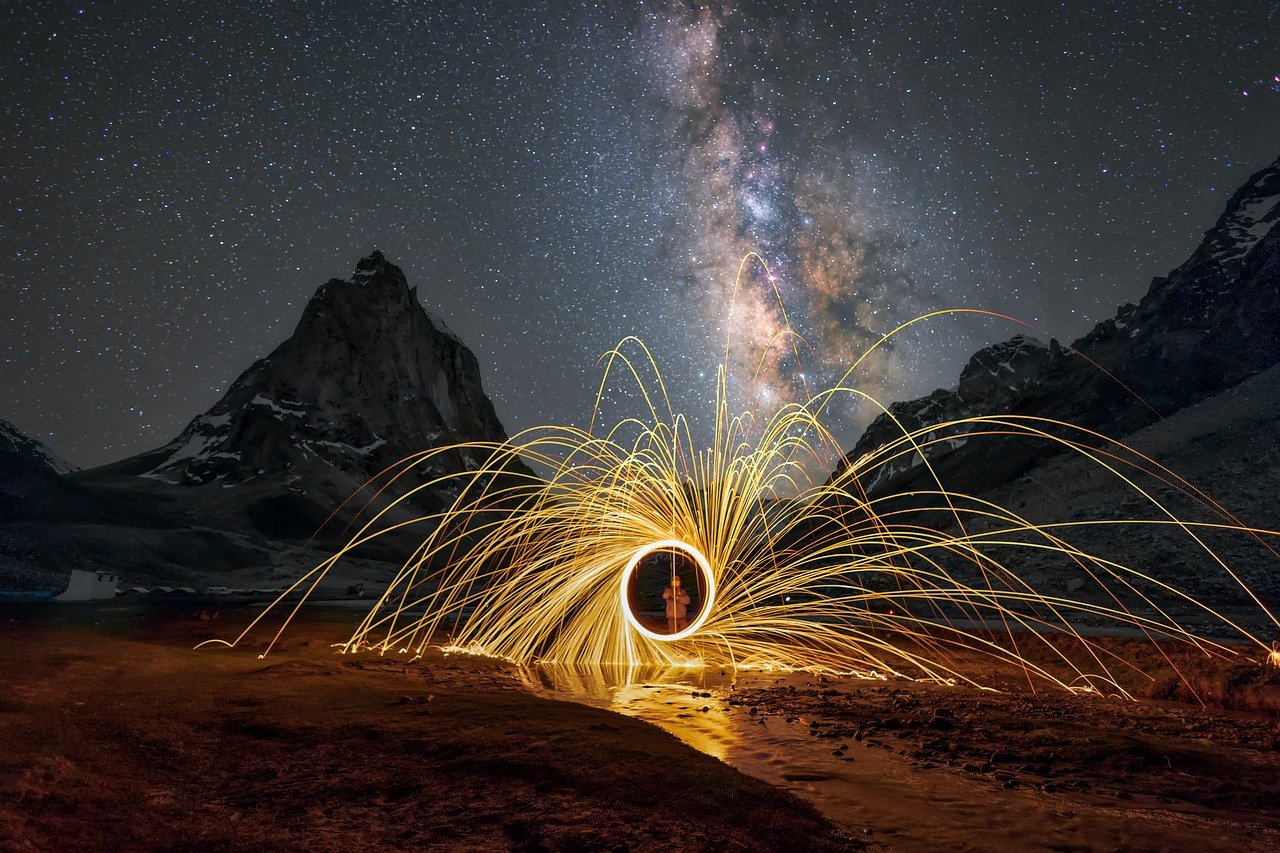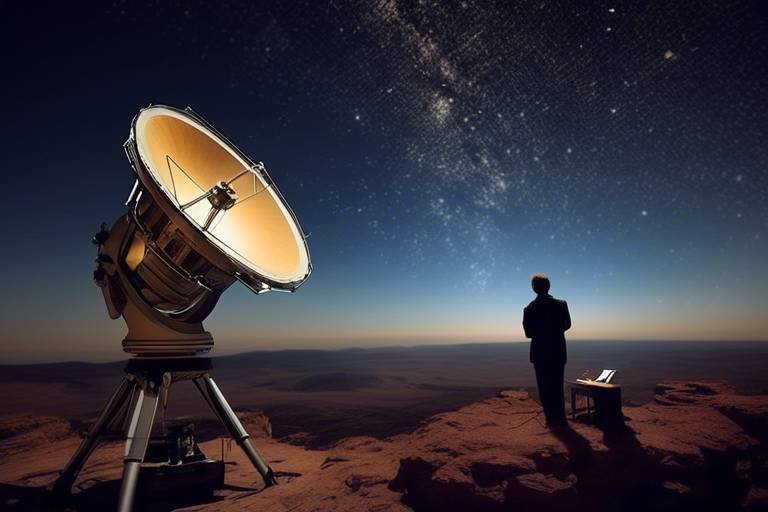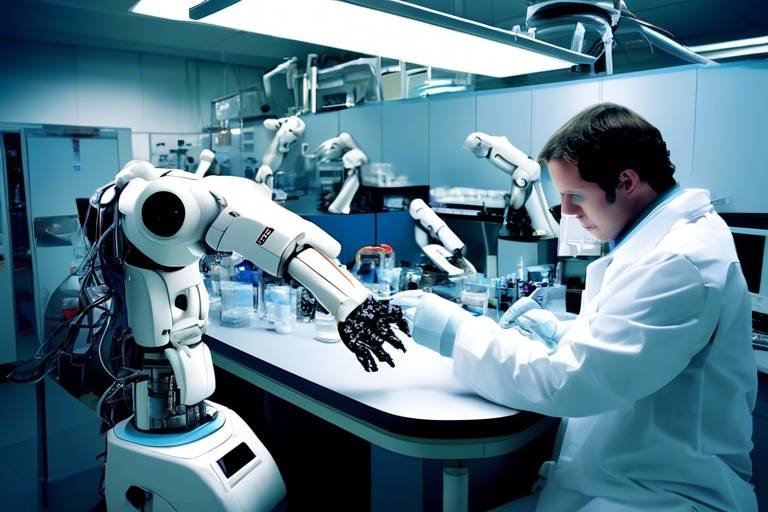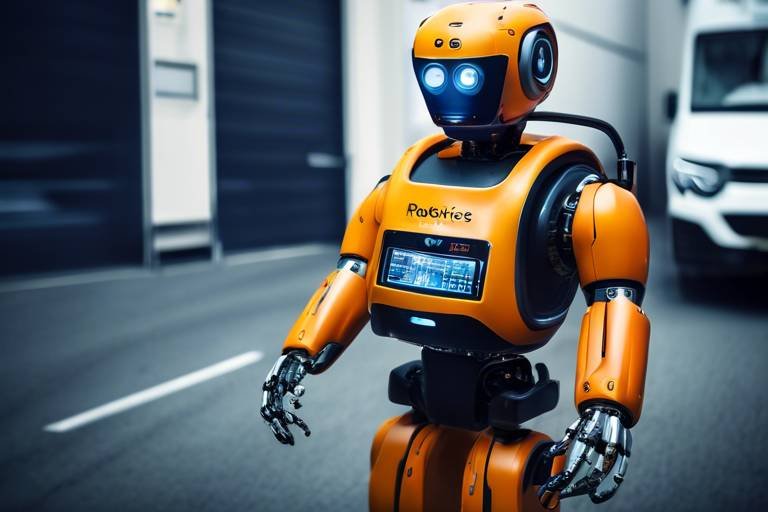The Role of Technology in Modern Astronomy
In the vast expanse of the universe, where mysteries abound and the unknown beckons, technology has become the key that unlocks the door to our cosmic understanding. The realm of astronomy, once limited to the naked eye and rudimentary tools, has undergone a remarkable transformation thanks to technological advancements. Imagine standing on the shores of a vast ocean, peering into the depths with nothing but a simple glass; now, picture having the most sophisticated diving gear at your disposal. This is the leap that technology has provided us in astronomy, enhancing our ability to observe, analyze, and interpret the universe like never before.
From the invention of the telescope to the latest innovations in data processing, technology has reshaped our approach to exploring the cosmos. Today, astronomers are not just stargazers; they are data scientists, utilizing cutting-edge tools to gather and analyze information from the farthest reaches of space. The marriage of technology and astronomy has led to unprecedented discoveries, allowing us to glimpse the birth and death of stars, the existence of exoplanets, and even the faint echoes of the Big Bang itself.
Moreover, the integration of artificial intelligence and machine learning into astronomical research is akin to having a highly skilled assistant who can sift through mountains of data in the blink of an eye. This has opened up new avenues for discovery, enabling scientists to identify patterns and anomalies that would have taken years, if not decades, to uncover manually. In this article, we will delve into the various ways technology has revolutionized modern astronomy, highlighting key advancements that have propelled our understanding of the universe forward.
Modern telescopes have revolutionized our ability to observe celestial bodies. Innovations like adaptive optics and space-based observatories allow astronomers to capture clearer, more detailed images of distant galaxies and planets.
The massive amounts of data collected by telescopes require advanced processing techniques. Machine learning and artificial intelligence are now employed to analyze astronomical data, uncovering patterns and insights that were previously unattainable.
The field of astronomy generates vast datasets from various sources. Big data technologies enable astronomers to store, manage, and analyze this information, leading to significant advancements in research and discovery.
Cloud computing has become essential for astronomers, providing scalable resources for data storage and processing. This technology facilitates collaboration among researchers worldwide, enhancing the speed and efficiency of astronomical studies.
Effective data visualization tools help astronomers interpret complex datasets. These tools transform raw data into comprehensible visual formats, making it easier to identify trends and anomalies in astronomical research.
Remote sensing technologies, such as satellites and drones, play a crucial role in modern astronomy. They provide valuable data on celestial phenomena, enhancing our understanding of planetary atmospheres and surface conditions.
Technological advancements have propelled space exploration missions, enabling human and robotic exploration of other planets. These missions yield critical information about the solar system and beyond, expanding our knowledge of extraterrestrial environments.
Robotic space probes have revolutionized our exploration of distant planets and moons. Equipped with advanced instruments, these probes gather data that informs our understanding of planetary geology, atmospheres, and potential for life.
Innovations in human spaceflight technology have opened new frontiers for exploration. Enhanced spacecraft design and life-support systems enable astronauts to conduct longer missions, pushing the boundaries of human presence in space.
- How has technology changed the way we observe space? Modern telescopes equipped with adaptive optics and space-based platforms allow for clearer images of celestial bodies, enabling deeper exploration.
- What role does artificial intelligence play in astronomy? AI helps in analyzing vast datasets, identifying patterns, and making predictions that would be impossible for humans to achieve alone.
- What are some examples of recent space exploration missions? Missions like Mars Rover and the James Webb Space Telescope have provided groundbreaking insights into our solar system and beyond.
- How do cloud computing and big data affect astronomical research? They allow for efficient storage, processing, and sharing of astronomical data, facilitating collaboration among scientists worldwide.

Advancements in Telescopes
Modern telescopes have truly transformed our ability to observe the cosmos, acting as our windows into the vast universe. With innovations like adaptive optics and space-based observatories, astronomers can now capture images that are not just clearer but also more detailed than ever before. Imagine standing on a beach, trying to see a distant ship through a foggy lens; that’s how astronomical observations used to be. Now, thanks to these advancements, it’s like the fog has lifted, revealing the intricate details of distant galaxies and planets.
Adaptive optics is a game-changer in this field. This technology corrects the blurring caused by Earth's atmosphere in real-time, allowing telescopes on the ground to produce images that rival those taken from space. For instance, the Keck Observatory in Hawaii employs adaptive optics to observe distant celestial phenomena with remarkable precision. This capability not only enhances our observational prowess but also expands the range of wavelengths we can explore.
On the other hand, space-based observatories like the Hubble Space Telescope have taken our observational capabilities to new heights—literally! By positioning telescopes beyond the atmosphere, we eliminate atmospheric distortions altogether. Hubble has provided breathtaking images of nebulae, galaxies, and other celestial objects, igniting our imagination and thirst for knowledge. The upcoming James Webb Space Telescope promises to further revolutionize our understanding by observing the universe in infrared, revealing details hidden from our current instruments.
Moreover, advancements in telescope design, such as the use of larger mirrors and enhanced sensor technologies, allow us to gather more light and capture fainter objects. This means that we can now observe phenomena that were once thought to be beyond our reach. For example, the recently launched European Extremely Large Telescope (E-ELT) will boast a mirror 39 meters in diameter, making it the largest optical telescope in the world. With this kind of power, astronomers will be able to delve deeper into the mysteries of the universe, studying the formation of stars and the evolution of galaxies with unprecedented detail.
In conclusion, the advancements in telescope technology are not just incremental improvements; they represent a leap into a new era of astronomical discovery. As we continue to innovate, who knows what other secrets the universe will unveil? Each new observation is like peeling back another layer of the cosmic onion, revealing the beauty and complexity of the universe we inhabit.

Data Processing and Analysis
In the realm of modern astronomy, the sheer volume of data collected by telescopes is nothing short of astronomical—pun intended! Imagine sifting through millions of images and measurements, trying to piece together the mysteries of the universe. This is where advanced data processing techniques come into play, transforming what was once an overwhelming task into a manageable and insightful endeavor. With the advent of technologies like machine learning and artificial intelligence, astronomers can now analyze vast datasets with unprecedented speed and accuracy.
Machine learning algorithms are particularly adept at identifying patterns that the human eye might miss. For instance, these algorithms can detect anomalies in the light curves of distant stars, which may indicate the presence of exoplanets. By training on existing data, these systems can predict and flag unusual occurrences, allowing astronomers to focus their attention where it's most needed. The application of AI in astronomy has not only enhanced our understanding of celestial phenomena but has also streamlined research processes, making them more efficient.
To put this into perspective, consider the following table that illustrates the comparison between traditional data analysis methods and modern machine learning techniques:
| Aspect | Traditional Methods | Machine Learning Techniques |
|---|---|---|
| Data Processing Speed | Slow and labor-intensive | Fast and automated |
| Pattern Recognition | Limited to human capability | Can identify complex patterns |
| Scalability | Difficult to scale | Highly scalable |
| Resource Requirement | High manpower needed | Minimal human intervention |
Moreover, the concept of big data in astronomy cannot be overlooked. The field generates an enormous amount of information from various sources, including ground-based telescopes, space observatories, and even citizen science projects. This influx of data necessitates robust big data technologies that allow astronomers to store, manage, and analyze information efficiently. Utilizing cloud computing solutions, researchers can now access scalable resources that enhance their ability to conduct complex analyses without being bogged down by hardware limitations.
As we delve deeper into the universe, the need for effective data visualization tools becomes increasingly apparent. These tools are essential for transforming raw data into comprehensible visual formats. Imagine trying to decipher a mountain of numbers without any context; it’s akin to reading a foreign language without a dictionary. Data visualization bridges this gap, enabling astronomers to see trends and anomalies at a glance. From interactive graphs to stunning visualizations of cosmic structures, these tools are indispensable in modern astronomical research.
In summary, the integration of advanced data processing and analysis techniques in astronomy has revolutionized our approach to understanding the universe. By leveraging machine learning, big data technologies, and effective visualization tools, astronomers are not just observing the cosmos—they are uncovering its secrets with a level of precision and insight that was once thought impossible.

Big Data in Astronomy
In the vast expanse of the universe, astronomers are continuously collecting an overwhelming amount of data. This phenomenon is known as big data, and it has become a cornerstone of modern astronomical research. Imagine trying to sift through millions of stars, galaxies, and cosmic events, all while looking for patterns or anomalies. It's like finding a needle in a haystack, except the haystack is the size of the universe!
With advancements in technology, the sheer volume of data generated from telescopes and other observational instruments has skyrocketed. For instance, the Large Synoptic Survey Telescope (LSST) is expected to produce over 20 terabytes of data every night. This data includes everything from images of distant galaxies to detailed measurements of celestial objects. The challenge is not just collecting this data but also analyzing it effectively to make meaningful discoveries.
To tackle this challenge, astronomers are turning to big data technologies. These tools allow researchers to store, manage, and analyze large datasets efficiently. Here are a few key components of how big data is revolutionizing astronomy:
- Data Storage: Cloud computing solutions provide astronomers with scalable storage options, allowing them to keep vast amounts of data accessible.
- Data Processing: Advanced algorithms and machine learning techniques help in processing and analyzing massive datasets, revealing patterns that were previously hidden.
- Collaboration: Big data platforms foster collaboration among scientists globally, enabling them to share insights and findings in real-time.
Moreover, the integration of artificial intelligence (AI) into data analysis has opened new doors for discovery. AI can sift through astronomical data much faster than humans, identifying trends and anomalies that might take researchers years to uncover. For example, AI algorithms have been used to detect exoplanets by analyzing light curves from distant stars, significantly speeding up the discovery process.
In essence, big data is not just a buzzword in astronomy; it is a revolutionary force that is transforming how we explore and understand the universe. As we continue to collect more data, the potential for groundbreaking discoveries increases exponentially. The future of astronomy is bright, and with the help of big data, we are on the brink of uncovering the universe's most profound secrets.
- What is big data in astronomy? Big data in astronomy refers to the vast amounts of information collected from various astronomical observations and instruments that require advanced technologies for storage and analysis.
- How is big data used in astronomy? Big data is used to analyze patterns, identify celestial phenomena, and facilitate collaboration among researchers through cloud computing and AI technologies.
- What role does AI play in astronomy? AI helps astronomers process and analyze large datasets quickly, revealing insights and trends that would be difficult to identify manually.

Cloud Computing Solutions
In today's fast-paced world of astronomy, cloud computing has emerged as a game-changer. Imagine having the ability to access vast computational resources and storage capacities without being constrained by the physical limitations of traditional data centers. This is precisely what cloud computing offers to astronomers and researchers alike. By leveraging cloud solutions, scientists can process and analyze enormous datasets generated by telescopes and space missions with remarkable speed and efficiency.
One of the most significant advantages of cloud computing is its scalability. As our understanding of the universe expands, so does the volume of data we collect. Traditional systems often struggle to keep up with this influx of information, leading to bottlenecks in research. However, cloud platforms provide an elastic infrastructure that can grow or shrink based on demand. This flexibility allows astronomers to focus on what truly matters: uncovering the mysteries of the cosmos.
Moreover, cloud computing fosters collaboration among researchers across the globe. Imagine a scenario where a team of scientists from different countries can seamlessly share data, tools, and insights in real-time. With cloud solutions, this is not only possible but also incredibly efficient. Researchers can work together on projects, analyze data collectively, and even run simulations without the hassle of transferring large files back and forth. This level of collaboration was unimaginable just a few years ago, and it is transforming the way we approach astronomical research.
In addition to collaboration, cloud computing also enhances the security of sensitive astronomical data. With data breaches becoming increasingly common, safeguarding research findings is paramount. Leading cloud service providers implement robust security protocols, ensuring that data is encrypted and access is tightly controlled. This peace of mind allows astronomers to focus on their research without worrying about unauthorized access or data loss.
Furthermore, the integration of machine learning and artificial intelligence into cloud platforms is opening new avenues for discovery. By utilizing these advanced technologies, astronomers can automate data analysis, identify patterns, and extract valuable insights from complex datasets. For instance, machine learning algorithms can sift through terabytes of data to detect anomalies or predict celestial events, making it an invaluable tool for modern astronomy.
To illustrate the impact of cloud computing on astronomy, consider the following table:
| Aspect | Traditional Systems | Cloud Computing Solutions |
|---|---|---|
| Scalability | Limited, fixed resources | Elastic, on-demand resources |
| Collaboration | Challenging, slow file transfers | Real-time, seamless sharing |
| Security | Vulnerable to breaches | Robust encryption and access control |
| Data Analysis | Manual, time-consuming | Automated, AI-driven |
In conclusion, cloud computing is not just a technological trend; it's a vital component of modern astronomy. By providing scalable resources, enhancing collaboration, ensuring data security, and integrating advanced analytics, cloud solutions are empowering astronomers to push the boundaries of our knowledge about the universe. As we continue to explore the cosmos, the role of cloud computing will only become more significant, paving the way for groundbreaking discoveries that will shape our understanding of existence itself.
- What is cloud computing? Cloud computing refers to the delivery of computing services over the internet, allowing users to access and store data remotely.
- How does cloud computing benefit astronomers? It provides scalable resources, enhances collaboration, ensures data security, and enables advanced data analysis.
- Can cloud computing handle large astronomical datasets? Yes, cloud platforms are designed to manage and process vast amounts of data efficiently.
- Is cloud computing secure for sensitive data? Leading cloud service providers implement robust security measures, including encryption and access controls, to protect sensitive information.

Data Visualization Tools
In the vast and complex world of astronomy, data visualization tools play a pivotal role in transforming raw data into meaningful insights. Imagine trying to navigate a maze blindfolded; that’s what astronomers face when dealing with massive datasets without the right visualization tools. These tools act as the guiding light, illuminating patterns and trends that would otherwise remain hidden in the darkness of numbers and statistics.
One of the key benefits of data visualization tools is their ability to present complex information in a way that is easily digestible. For instance, consider how a simple graph or chart can convey the trajectory of a comet or the brightness of a distant star over time. Instead of sifting through endless spreadsheets, astronomers can quickly grasp the essence of their findings through visual representations. This not only speeds up the analysis process but also enhances collaboration among researchers, as visual data can be shared and interpreted more easily across different teams.
Moreover, modern data visualization tools come equipped with advanced features that allow for interactive exploration of astronomical data. Tools like Tableau and Matplotlib enable users to manipulate datasets dynamically, zooming in on specific areas of interest or adjusting parameters to see how changes affect the overall picture. This interactivity can lead to serendipitous discoveries, much like how a casual stroll through a museum can unveil unexpected treasures.
To illustrate the effectiveness of these tools, let’s take a look at a comparison of some popular data visualization software used in astronomy:
| Tool | Features | Best For |
|---|---|---|
| Tableau | Interactive dashboards, real-time data analysis | Collaborative research projects |
| Matplotlib | Customizable plots, integration with Python | Detailed scientific visualizations |
| Python (Seaborn) | Statistical data visualization, beautiful graphics | Data exploration and statistical analysis |
As we move further into the age of big data, the importance of data visualization tools in astronomy cannot be overstated. They not only allow astronomers to interpret their findings more effectively but also serve as a bridge between complex data and public understanding. When the public can visualize the wonders of the universe, it sparks curiosity and inspires future generations of scientists.
In conclusion, data visualization tools are not just optional aids; they are essential components of modern astronomical research. By turning data into visuals, they empower astronomers to explore the cosmos with clarity and insight, ensuring that the mysteries of the universe are a little less daunting and a lot more fascinating.
- What are data visualization tools? Data visualization tools are software applications that help transform complex data into visual formats, making it easier to understand and analyze.
- Why are data visualization tools important in astronomy? They allow astronomers to quickly interpret vast datasets, identify trends, and share findings with others in an accessible manner.
- Can I use data visualization tools without programming knowledge? Yes, many tools like Tableau offer user-friendly interfaces that do not require advanced programming skills.
- What are some popular data visualization tools used in astronomy? Some popular tools include Tableau, Matplotlib, and Python's Seaborn library.

Remote Sensing Technologies
In the realm of modern astronomy, have emerged as pivotal tools that enhance our understanding of the cosmos. Imagine being able to observe distant celestial bodies without ever leaving our planet! Thanks to advancements in satellite and drone technology, astronomers can gather invaluable data about various astronomical phenomena. These technologies act like a pair of high-tech binoculars, allowing scientists to peer deeper into the universe than ever before.
Satellites orbiting the Earth and other celestial bodies are equipped with sophisticated instruments that can measure everything from temperature and atmospheric composition to surface features of planets and moons. This data is crucial for understanding the conditions that govern these celestial environments. For instance, by analyzing the atmospheric gases of exoplanets, astronomers can infer potential habitability, which is a key question in the search for extraterrestrial life.
Drones, on the other hand, have opened up new avenues for terrestrial observations. They can be deployed to remote locations on Earth to collect data about geological formations and environmental conditions. This information not only aids in understanding our own planet but also provides analogs for the conditions that might exist on other planetary bodies. For example, studying volcanic activity on Earth can give insights into similar processes on Mars.
Moreover, remote sensing technologies facilitate the monitoring of celestial events. For instance, during a supernova explosion or a comet's approach, satellites can capture real-time data, providing astronomers with a unique opportunity to study these phenomena as they unfold. This capability is akin to having a front-row seat to the universe's most spectacular shows!
With the integration of machine learning algorithms, the data collected through remote sensing can be analyzed more efficiently. These algorithms can detect patterns and anomalies that human eyes might miss, leading to groundbreaking discoveries. For example, researchers have used satellite data to observe changes in the atmospheres of distant planets, revealing new information about their climates and potential for supporting life.
In summary, remote sensing technologies are not just tools; they are the eyes and ears of modern astronomy. They allow us to explore the universe in ways that were once thought impossible. As we continue to innovate and improve these technologies, the possibilities for discovery are truly limitless.
- What are remote sensing technologies? Remote sensing technologies are tools that collect data about celestial bodies from a distance, typically using satellites and drones.
- How do satellites contribute to astronomy? Satellites provide critical data on atmospheric conditions, surface features, and other phenomena of celestial bodies, enhancing our understanding of the universe.
- Can drones be used in astronomy? Yes, drones can be deployed to gather data about geological formations on Earth, which can provide insights into similar processes on other planets.
- What role does machine learning play in remote sensing? Machine learning algorithms analyze vast amounts of data collected from remote sensing technologies, helping to identify patterns and anomalies that lead to new discoveries.

Space Exploration Missions
Technological advancements have propelled into a new era, enabling both human and robotic exploration of other planets. Just think about it: a few decades ago, the idea of sending a rover to Mars or landing on an asteroid seemed like something out of a science fiction novel. Today, it's a reality! These missions are not just about reaching new frontiers; they yield critical information about our solar system and beyond, expanding our knowledge of extraterrestrial environments.
One of the most exciting aspects of modern space exploration is the use of robotic space probes. These incredible machines have revolutionized our understanding of distant planets and moons. Equipped with advanced instruments, they gather data that informs our understanding of planetary geology, atmospheres, and even the potential for life. For instance, the Curiosity rover on Mars has provided invaluable insights into the planet's past, revealing evidence of ancient water flows and organic compounds. It's like having a scientific detective on another planet, piecing together the history of worlds far away!
Moreover, innovations in human spaceflight technology have opened new frontiers for exploration. Enhanced spacecraft design and life-support systems enable astronauts to conduct longer missions. Imagine being in a metal capsule, floating in the vastness of space, with the Earth a tiny blue dot behind you. It’s a thrilling yet daunting prospect! With advancements like the Orion spacecraft, NASA is gearing up for missions that could take humans further than ever before, possibly to Mars. This isn’t just about exploration; it’s about answering profound questions about our existence and the universe.
As we look to the future, the possibilities seem endless. Here are just a few areas where technology is set to make a significant impact on space exploration:
- Interstellar Missions: Technologies are being developed to send probes to nearby star systems.
- Moon Bases: Plans for sustainable human bases on the Moon could pave the way for deeper space exploration.
- Astrobiology: Research into life beyond Earth is becoming a priority, with missions focused on icy moons like Europa and Enceladus.
In summary, the advancements in technology have not only made space exploration more feasible but have also ignited a spark of curiosity that drives humanity to explore the unknown. As we continue to push the boundaries of what is possible, we are not just discovering new worlds; we are uncovering the mysteries of our own existence in the universe.
Q: What are robotic space probes?
A: Robotic space probes are unmanned spacecraft that gather data from other planets and celestial bodies, providing insights into their geology, atmospheres, and potential for life.
Q: How has technology improved human spaceflight?
A: Technology has led to enhanced spacecraft designs and life-support systems, allowing astronauts to conduct longer missions and explore further into space.
Q: What is the significance of space exploration?
A: Space exploration helps us understand our universe, answers fundamental questions about life, and drives technological advancements that can benefit life on Earth.

Robotic Space Probes
Robotic space probes have fundamentally changed the way we explore our solar system and beyond. These sophisticated machines are designed to travel vast distances, gathering invaluable data about celestial bodies without the need for human presence. Imagine sending a highly advanced robot to another planet, equipped with tools that can analyze soil, capture stunning images, and even relay information back to Earth! This is not science fiction; it’s the reality of modern exploration.
One of the most remarkable aspects of robotic probes is their ability to operate in environments that would be hostile to humans. For instance, the Voyager missions, launched in the late 1970s, have traveled beyond the outer planets and are now in interstellar space. They have provided us with stunning images of Jupiter, Saturn, and their moons, revealing details that were previously unimaginable. The data collected has been pivotal in expanding our understanding of planetary atmospheres and magnetic fields.
Robotic probes are equipped with a variety of instruments that allow them to conduct scientific experiments and gather data. Some of the key instruments include:
- Cameras: High-resolution cameras capture images of planetary surfaces and phenomena.
- Spectrometers: These devices analyze the composition of atmospheres and surfaces by studying light spectra.
- Seismometers: Used to measure seismic activity on celestial bodies, providing insights into their geological processes.
Another significant advantage of robotic space probes is their ability to operate autonomously. They are programmed to make decisions based on the data they collect, allowing them to adapt to unexpected situations. For example, the Curiosity rover, which landed on Mars in 2012, has been exploring the Martian surface, analyzing rock samples, and sending back stunning images. Its ability to navigate and conduct experiments independently has provided scientists with a wealth of information about the Martian environment.
Moreover, robotic probes can be sent to locations that are light-years away, such as the New Horizons mission, which flew by Pluto in 2015. This mission provided the first close-up images of the dwarf planet and its moons, revealing a complex and diverse landscape that challenged our previous understanding of what constitutes a planet. The data collected by New Horizons continues to be analyzed, leading to new discoveries about the outer reaches of our solar system.
In summary, robotic space probes are not just tools; they are our eyes and ears in the cosmos. They allow us to explore the unknown, gather data, and expand our knowledge of the universe. As technology continues to advance, we can only imagine the incredible discoveries that await us in the future. With each mission, we are one step closer to answering fundamental questions about our place in the universe and the potential for life beyond Earth.
Q: What are robotic space probes used for?
A: Robotic space probes are used to explore celestial bodies, gather data on their composition and atmospheres, capture images, and conduct scientific experiments without the need for human presence.
Q: How do robotic probes communicate with Earth?
A: Robotic probes communicate with Earth through radio signals, sending data back to mission control, where scientists analyze the information.
Q: What are some famous robotic space probes?
A: Some well-known robotic space probes include Voyager 1 and 2, Curiosity, New Horizons, and the Mars rovers Spirit and Opportunity.
Q: Can robotic probes make decisions on their own?
A: Yes, many robotic probes are equipped with autonomous systems that allow them to make decisions based on the data they collect, enabling them to adapt to changing conditions.

Human Spaceflight Innovations
When we think about the vastness of space, it often feels like a dream, doesn’t it? Well, thanks to **human spaceflight innovations**, those dreams are becoming a reality. Over the past few decades, we've witnessed remarkable advancements that have not only enhanced our ability to explore the cosmos but also made it safer and more efficient for astronauts. Imagine being able to travel beyond our planet with the comfort and technology that we have on Earth! That's exactly what these innovations aim to achieve.
One of the most significant breakthroughs in human spaceflight is the development of **next-generation spacecraft**. These vehicles are designed with cutting-edge materials and technologies that allow them to withstand the harsh conditions of space. For instance, the **SpaceX Crew Dragon** and NASA's **Orion** spacecraft are equipped with advanced heat shields and life-support systems, ensuring that astronauts can embark on longer missions without compromising their safety. It’s like upgrading from a simple car to a high-tech luxury vehicle, where comfort meets functionality.
Moreover, the evolution of **life-support systems** has been a game changer. These systems are responsible for providing astronauts with the essentials—oxygen, water, and food—while also managing waste. Innovations such as **closed-loop life support** systems recycle air and water, making long-duration missions feasible. Imagine being on a trip for months, yet having everything you need right at your fingertips! This technology not only boosts efficiency but also reduces the need for resupply missions, which can be costly and complex.
Another exciting aspect of human spaceflight innovations is the emphasis on **crew training and simulation**. Astronauts now undergo rigorous training using virtual reality (VR) and augmented reality (AR) technologies. These immersive experiences allow them to prepare for various scenarios they might encounter in space, from equipment malfunctions to emergency landings. It’s akin to playing a video game where you train for real-life challenges—only this game has stakes that are literally out of this world!
Furthermore, the collaboration between private companies and government agencies has accelerated the pace of innovation. Companies like **Blue Origin** and **Virgin Galactic** are pushing boundaries by developing reusable rockets and commercial spaceflights. This partnership is not just about exploration; it’s about making space travel accessible to everyone, not just astronauts. Can you imagine a future where anyone can book a ticket to space for a weekend getaway? It’s not as far-fetched as it sounds!
In conclusion, the advancements in human spaceflight technologies are paving the way for a new era of exploration. With each innovation, we are not only expanding our reach into the cosmos but also enhancing our understanding of what it means to be human in the vast universe. As we continue to push the boundaries of technology, the possibilities for exploration seem limitless, and who knows? The next giant leap for mankind might just be around the corner.
- What are the latest innovations in human spaceflight?
The latest innovations include next-generation spacecraft like SpaceX's Crew Dragon, advanced life-support systems, and immersive training technologies using VR and AR. - How do life-support systems work in space?
Life-support systems recycle air and water, providing astronauts with essential resources while managing waste, allowing for long-duration missions. - What role do private companies play in space exploration?
Private companies are developing reusable rockets and commercial spaceflights, accelerating innovation and making space travel more accessible. - Can anyone travel to space in the future?
With advancements in technology and commercial spaceflight, it is becoming increasingly possible for non-astronauts to travel to space.
Frequently Asked Questions
- How has technology changed the way we observe the universe?
Technology has dramatically transformed our observational capabilities. Modern telescopes equipped with adaptive optics and space-based instruments capture clearer images of distant celestial bodies, allowing astronomers to study galaxies and planets in unprecedented detail.
- What role does big data play in astronomy?
Big data is crucial in astronomy as it helps manage and analyze the massive datasets generated by telescopes and other instruments. Advanced technologies enable astronomers to uncover patterns and insights that enhance our understanding of the universe.
- How do cloud computing solutions benefit astronomers?
Cloud computing provides astronomers with scalable resources for data storage and processing. This technology facilitates collaboration among researchers globally, speeding up research and enhancing the efficiency of astronomical studies.
- What are data visualization tools, and why are they important?
Data visualization tools transform complex astronomical data into understandable visual formats. They help astronomers identify trends and anomalies, making it easier to interpret vast amounts of information collected during research.
- How do remote sensing technologies contribute to astronomy?
Remote sensing technologies, such as satellites and drones, provide essential data about celestial phenomena. They enhance our understanding of planetary atmospheres and surface conditions, offering insights into the characteristics of other worlds.
- What advancements have been made in robotic space probes?
Robotic space probes have revolutionized our exploration of distant planets and moons. Equipped with sophisticated instruments, these probes gather crucial data about planetary geology, atmospheres, and the potential for life beyond Earth.
- How has human spaceflight technology evolved?
Innovations in human spaceflight technology have expanded our exploration capabilities. Enhanced spacecraft designs and advanced life-support systems allow astronauts to undertake longer missions, pushing the limits of human presence in space.



















